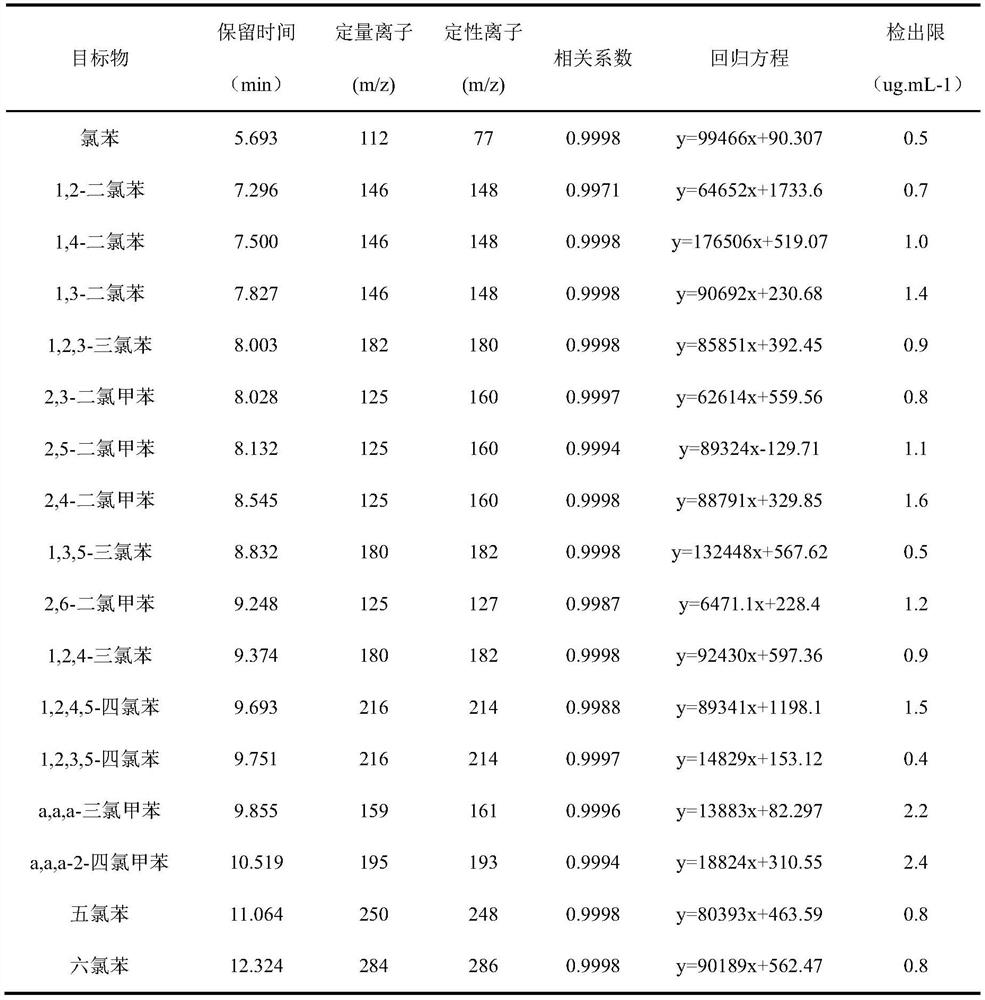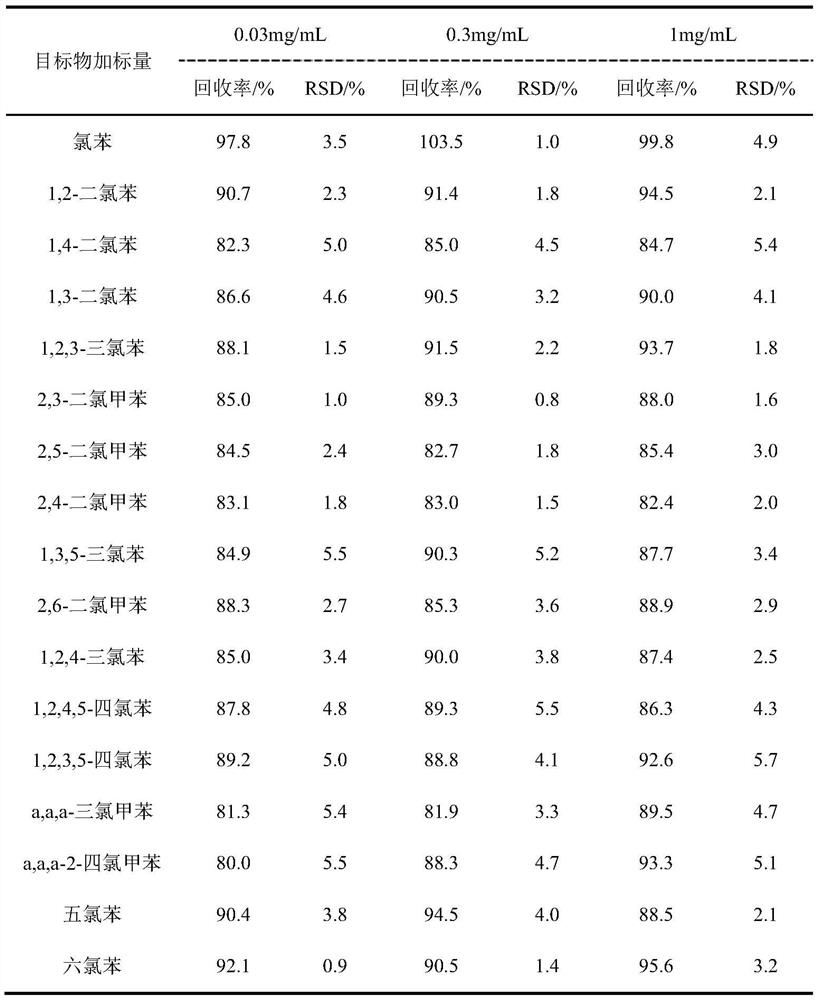Method for determining chlorine organic pollutants in textile solid wastes by combining multiple methods
A technology for organic pollutants and solid wastes, applied in measuring devices, instruments, scientific instruments, etc., can solve problems such as low extraction efficiency, large amount of organic solvent, and inability to accurately determine the content of CCBs.
- Summary
- Abstract
- Description
- Claims
- Application Information
AI Technical Summary
Problems solved by technology
Method used
Image
Examples
Embodiment 1
[0025] This embodiment is a multi-method method for the determination of chlorine-based organic pollutants in textile solid waste. The method combines accelerated solvent extraction and solid-phase extraction to extract chlorine-based organic pollutants in textile solid waste. , purification and concentration treatment, and qualitative and quantitative analysis of the chlorine organic pollutants by gas chromatography. Specifically include the following steps:
[0026] S1: Preparation of standard solution: Prepare the standard product in turn with dichloromethane to make a standard stock solution with a concentration of 500ug / mL, then dilute the standard stock solution again into mixed standard solutions with different concentrations of 0.01-2mg / mL for later use, and put them in the refrigerator Store at -4°C, valid for 3 months. Described chlorinated organic pollutant standard substance comprises: chlorobenzene (99.9%), 1,2-dichlorobenzene (99.8%), 1,3-dichlorobenzene (99.7%)...
Embodiment 2
[0033] This example is to verify the sensitivity, accuracy, precision, reliability and practicability of the multi-method method for the determination of chlorine-based organic pollutants in textile solid waste described in Example 1.
[0034] The sensitivity verification method described in this example is: prepare a series of standard solutions of 0.01 to 2 mg / mL, according to the optimal experimental conditions described in Example 1, use textile solid waste 1 as a blank sample, and use a concentration of The abscissa, the peak area is the ordinate, draw a standard curve, calculate the detection limit with 3 times the signal-to-noise ratio (S / N=3), the correlation coefficient, regression equation, detection limit and other results of the method are shown in Table 1.
[0035] Table 1 Quantitative, qualitative ions, correlation coefficients, regression equations and detection limits of CCBs
[0036]
[0037] The above table shows that the correlation coefficients of the 17...
PUM
| Property | Measurement | Unit |
|---|---|---|
| concentration | aaaaa | aaaaa |
| thickness | aaaaa | aaaaa |
| recovery rate | aaaaa | aaaaa |
Abstract
Description
Claims
Application Information
 Login to View More
Login to View More - R&D
- Intellectual Property
- Life Sciences
- Materials
- Tech Scout
- Unparalleled Data Quality
- Higher Quality Content
- 60% Fewer Hallucinations
Browse by: Latest US Patents, China's latest patents, Technical Efficacy Thesaurus, Application Domain, Technology Topic, Popular Technical Reports.
© 2025 PatSnap. All rights reserved.Legal|Privacy policy|Modern Slavery Act Transparency Statement|Sitemap|About US| Contact US: help@patsnap.com


